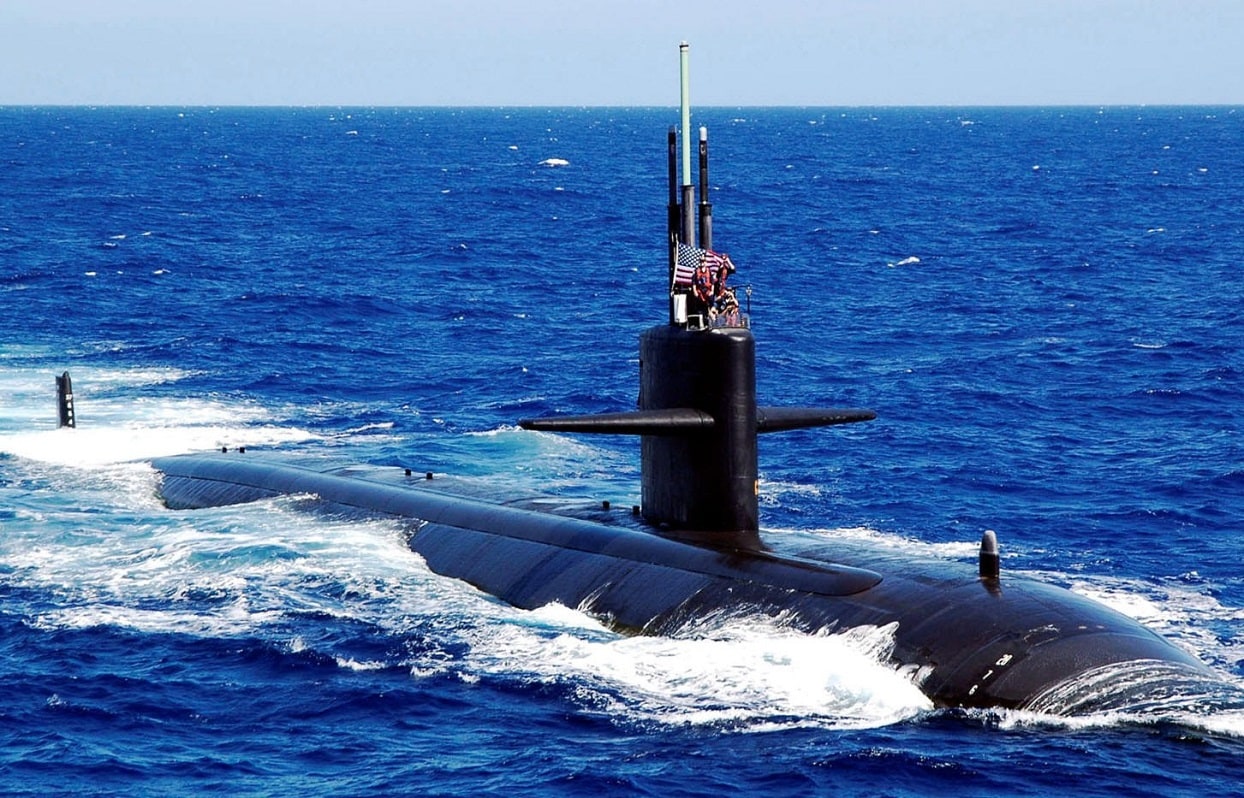Would Australia ever consider a purchase or even leasing older, U.S. navy nuclear-powered attack submarines? The idea seemed almost crazy nearly ten years ago when I was writing and doing research on it, but it might not be as crazy as it sounds these days.
Think about it from this perspective. When one looks at a map of the Indo-Pacific region, it becomes clear that considering the vast amount of ocean and vital sea lanes Australia needs to ensure are secure, nuclear-powered submarines always make the most sense over the long term. Simply put, even modern diesel-electric submarines powered by AIP technology just won’t cut it, as they would not be able to stay on station for any reasonable amount of time if they had to deploy like hot spots such as the South China Sea or Taiwan Strait. Only a nuclear-powered boat could do it.
Seeing Australia acquire such a platform has been something I have been a fan of for nearly a decade, and I have always tried to seek out experts who have a similar perspective. Considering the recent AUKUS deal, I present below my 2012 interview with Australian national security expert Ross Babbage. A fellow traveler in the quest for Australian nuclear-powered attack submarines, he led the charges on this issue and his ideas deserve another look. Here is a short excerpt of the conversation we had when I served as Editor-In-Chief of The Diplomat back in 2012, but focusing on the idea of Australia acquiring used U.S. Navy nuclear attack submarines:
Question: America is decommissioning Cold War-era Los Angeles-class attack submarines that are nuclear powered and still very capable. Could Australia consider leasing or purchasing such submarines at a reduced rate that would give Australia a jump in capabilities over a Diesel/AIP-powered submarine? If possible, what modifications would Australia need to make to the sub to make it viable to Australian needs?
Response: While an interesting suggestion, I don’t think that this is a good idea for Australia.
If our politicians decide to take the major step of leasing or acquiring nuclear powered submarines from either the U.S. or U.K. (or conceivably from France), the Australian Navy would be keen to integrate training as far as was reasonably feasible with the host navy at an early stage.
The Australian Navy would likely insist on training and certification standards that were at least as stringent as those employed by the U.S. Navy and Australian Navy. This training and skill development would most appropriately center around the class of boat that Australia intends to operate for the following 30 to 40 years.
If the Australian Navy were to acquire or lease Virginia Class boats, it would make greatest sense for nearly all training to be directed towards that class.
Having said that, there might be a case for the Australian Navy and U.S. Navy to jointly operate one or two late model 688 Los Angeles Class boats for a few years in the early stages of an Australian SSN program.
This type of special arrangement might be designed both to build key Australian Navy skills and qualifications and to keep valuable U.S. SSNs operating a few years longer than their currently planed date of decommissioning. This approach may be worth considering if all other key issues concerning an Australian SSN force and fleet cooperation were agreed by the respective governments.
With a delay in the Joint Strike Fighter announced as well as cuts to high-tech artillery pieces, how much will cost be a factor in the creation of Australia’s next submarine platform? Is cost driving the debate more than capabilities?
Cost will always be a key issue in any defense acquisition for Australia and, I suspect, for all Western allies. However, cost will never be the sole criterion. The next-generation submarine program was accorded a special strategic importance in the 2009 White Paper because, if properly developed, it’s one of a very few capabilities that have the potential to deter even a major power in a serious crisis. In consequence, there is a strong case for this country to invest heavily to generate exceptionally strong underwater, long-range air combat and cyber capabilities. The current Australian government appears to have lost sight of this core strategic logic, but it will probably re-surface strongly within a couple of years and then I expect greater coherence and consistency in strategic direction and these key programs to be accorded stronger focus.
Harry J. Kazianis is a Senior Director at the Center for the National Interest. You can follow him on Twitter: @Grecianformula.

